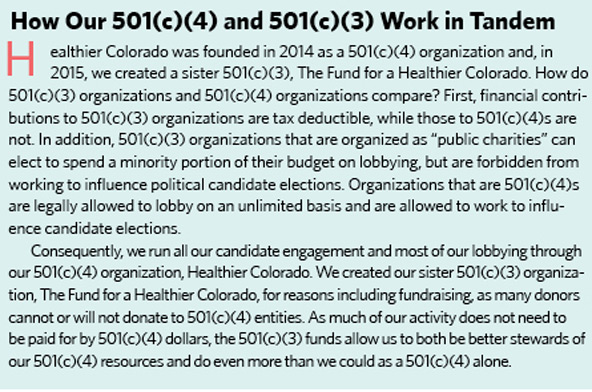 (Illustration by Chiara Zarmati)
(Illustration by Chiara Zarmati)
America leads the world in the size of our economy and the amount of money we spend on health care, but these variables do not translate into longer lives for Americans. Data just released by the US Centers for Disease Control show that life expectancy has fallen for the past three years. We have not seen American life expectancy decline this much since a century ago, when a flu pandemic swept the country in 1918. So-called deaths of despair, such as suicides, drug overdoses, and alcoholic liver disease,1 have significantly contributed to our long-term decline in life expectancy vis-à-vis peer nations; there are now at least 30 nations in which people have a longer life expectancy than we do here in the United States.2 A baby born in America is nearly three times as likely to die in infancy as a baby born in Finland, Japan, Portugal, or Sweden.3 We also have the highest obesity rate of any wealthy nation in the world.
Healthy Eating, Active Living

This collection of articles, produced for Grantmakers In Health and supported by the Colorado Health Foundation, explores the latest thinking from health funders, researchers, and advocates on healthy eating and active living (HEAL) and healthy communities.
-
Healthy Eating, Active Living: Reflections, Insights, and Considerations for the Road Ahead
-
Healthy Eating and Active Living Through an Equity Lens
-
Connecting Health and Education So Children Can Learn and Thrive
-
The Future of Healthy Eating Research
-
How to Improve Physical Activity and Health for All Children and Families
-
The Colorado Health Foundation’s HEAL Evolution
-
How Market Forces Could Improve How We Eat
-
The Power of Business to Change Food Culture for the Better
-
Political Power as a Tool to Improve the Health of All Americans
-
Evaluate, Invest in Advocacy, and Shrink the Change
We aren’t suffering from a mass outbreak of personal irresponsibility. The flaws are not in our character, but rather in our politics and resulting policies. The stark reality is that Americans by and large are not presented with sufficient opportunity to be healthy. Public policy is the only lever with which we can create change at the scale necessary to make a substantial difference. Charitable efforts may be well intentioned, but they fall short of creating a just system for many communities.
Many political actors are focused on health care, but the policy solutions required to improve health in America go well beyond the walls of the doctor’s office. Right now, there are some modest lobbying efforts in state capitols and in Washington, D.C., on health and health-care policy, but they are too often outmatched by other competing interests. In our pay-to-play political system, the interests of population health are at a significant disadvantage versus those of other actors who are less concerned with public health. In Colorado, we are standing up against these actors and for people’s well-being.
Healthier Colorado and HEAL
Through lobbying and exerting influence in elections, Healthier Colorado has produced several policy victories on a broad range of issues that influence health, including healthy eating and active living (HEAL). Spending around $1.5 million on elections over the last three years, we succeeded with both health-related ballot measures and political candidate races. Moreover, we did all this by working with Democrats and Republicans alike.
Our approach to HEAL public policy is to mitigate where we must, but put fundamental change first whenever possible. We adopted this approach for a couple of reasons. First, mitigation strategy is essentially the role of most foundations and direct service providers, such as ones who may provide access to nutritious food or physical activity for disadvantaged populations. They aren’t changing the forces that shape our world but are instead confronting the world as it is and trying to make it better for people suffering any ill effects as a result.
Healthier Colorado takes a different tack. Instead of building a playground in a low-income community, for example, we implemented new statewide regulatory standards in 2015 for physical activity, nutrition, and screen time for commercial childcare centers. Instead of just trying to educate the public about the dangers of sugary drinks, we passed the nation’s second-ever voter-approved tax on sugary drinks and directed the resulting revenue toward health programs for the low-income families disproportionately affected by the consumption of those products. Due to political necessity, we sometimes pursue incremental public policy changes that do not necessarily directly address the root cause of a problem, but our long-term strategy is to make fundamental changes via public policy.
In addition, it has become clear that simply making positive HEAL resources available to people is often not enough for significant population-level health improvement. For example, studies show that workplace wellness programs don’t work very well.4 Providing financial incentives or additional opportunities for people to make healthier choices tends to work best with people who would make healthier choices anyway, particularly as time and other scarcities pose insurmountable obstacles for so many.5
Therefore, although we do support policies geared toward things like improving the food or active transportation infrastructure within a low-income neighborhood, we also apply focus to changing the fundamental economic and lifestyle realities of populations. This has led us to support public policy that expanded broadband internet access in rural areas, for example, as well as public policy that significantly curtailed the predatory activity of payday lenders, who have life-altering negative impacts on the physical and mental health of low-income residents.6

To view in a new window, click here.
People, Money, and Political Accountability
People and money are what matter most in politics. With about 70,000 members across the state—a number that is steadily growing—we are Colorado’s largest health-advocacy organization. We have members in every state House and Senate district, and we possess the capacity to mobilize a critical mass of grassroots action on every statewide campaign we run. We built this membership through three avenues: online engagement, field activities such as community events and advocacy trainings, and America’s first full-time health-focused field canvassing and fundraising.
As we started with a tiny staff, online engagement was initially our only means of connecting with sizable audiences. We quickly built a large following as we invested in actions that directly put people together with decision makers on a wide array of health issues. Through simple online petitions, thousands of Coloradans added their names and contact information in support of our actions.
We also learned a few important lessons along the way.
It became clear that we did not have to painstakingly explain the broader scientific or public policy contexts for our petitions. Although health policy can be complex and obscure, people have an intuitive understanding of human needs that can be leveraged when asking them to support a policy issue that might be new to them.
In addition, although people have an intuitive understanding of human needs, they do not have an intuitive understanding of the jargon used in health policy circles. For example, in a recent series of voter focus groups we commissioned, not a single participant recognized or understood the phrase “health equity.” Most people thought of “equity” as the value accrued in home ownership. Through both opinion research and online and field experimentation, we honed our language to make it accessible to everyone, regardless of background.
Third, just as we should not silo the many components that influence our health when we address health policy, we don’t have to silo our approach to engaging grassroots action on health. We found that many people are interested in taking action on a variety of the seemingly disparate topics within it. For example, a person signing a petition concerned with pedestrian infrastructure is often as willing to sign one on Medicaid policy. This cohesion mirrors the environmental movement, which embraces a wide variety of issues, from climate change to land conservation to toxics, and yet is cohesive. We must begin to focus on building a health movement that includes and connects all the various influences upon our health.
Although health policy can be complex and obscure, people have an intuitive understanding of human needs that can be leveraged when asking them for support.
As we grew as an organization, we applied the lessons learned from our online efforts and found that they worked equally well in the field. In 2017, we began deploying a canvassing team to ring people’s doorbells and approaching them in the street. The team engages with individuals on the wide range of issues we focus on and solicits one-time and sustaining donations. In 2019, we anticipate that around 2,000 state residents will donate to Healthier Colorado. Canvassing is a critical component to building an activist base, as well as fundraising.
To fund our agenda, we need not just any type of money, but money that is legally eligible to be spent on candidate elections. We are fortunate to have a well-resourced 501(c)(4), but we cannot always send money directly from that 501(c)(4) to candidates, due to restrictions in state law. (Similar restrictions are found in many other states and local jurisdictions across the country.) Donations from individuals, up to specified limits and routed through regulated entities prescribed under law, can be converted into checks that we can write to political candidates that we support. In addition to this direct-to-candidate activity, we spend money from our 501(c)(4) on a variety of so-called independent expenditure (sometimes less charitably called “dark money”) activities, which are efforts to support or oppose candidates in a manner that is not conducted in coordination with that particular candidate.
We have also developed methods to measure the performance and potential of these politicians, which can help determine how we deploy the accountability and political influence resources we’ve built. In 2018, we released what we believe to be America’s first state legislative scorecard that covers a range of health policies that include health care, public health, and socioeconomic influences on health.7 We issue and collect candidate questionnaires that elicit positions on key health policy issues for state legislative and gubernatorial candidates as well as candidates at the local level.
In the Interest of Permanent Interests
We are a political organization that believes government should play a fundamental role in creating an environment where everybody can live a healthy life, but we emphatically do not place our allegiance with one particular party. We set our priorities based on evidence-based policies that are responsive to the population health needs of Coloradans. Although we make calculations regarding the political viability of the policies we push, we do not make subjective decisions based on an estimate of where a policy sits on the left-right political spectrum.
We are proud of what we have achieved so far but are also cognizant that our resources are relatively limited versus those of corporate and other well-heeled stakeholders.
Our belief about the role of government often puts us at odds with many on the far right. However, we believe that if we show elected officials, regardless of party, how our positions support their constituents, and offer meaningful political rewards and punishments, we can build new bridges.
Although I am a progressive Democrat, I hired a well-known Republican operative to run our statewide political portfolio. We also have both prominent Democrats and Republicans on our boards of directors. This arrangement was not simple to construct, and its operation has not been completely tension-free, but the dividends it’s yielded have been significant. Almost every bill we have supported in the state Legislature has had bipartisan support. We have also won tax-increase ballot measures in deep red areas of the state. In 2018, about 54 percent of the total we spent on state legislative candidate races went to support Democrats, and about 46 percent went to Republicans—not because we sought an artificial balance, but rather because we had legitimate reasons to support politicians on both sides.
In 2018, 51 of the 53 state legislative candidates we supported were victorious, and we won all 11 of the local and state ballot measures we supported. Over the past few years, we have won a multitude of policy victories on a wide variety of issues. In addition to the HEAL policies mentioned above, we passed a state law to end the practice of putting innocent people who are experiencing a mental health crisis in jail. We passed regulations to improve child immunization policy in schools. We also took legislative action to improve access to health care in rural areas.
You might think that Colorado is a politically liberal oasis within the mountain West that makes our progress uniquely possible. Not quite. Every policy victory mentioned in this article occurred during a time in which state government control was split between Democrats and Republicans. Bipartisanship, as described above, is at the heart of our approach and can be applied anywhere.
We don’t want to be unique anymore, particularly because we know that we cannot turn the tide alone. We are proud of what we have achieved so far but are also cognizant that our resources are relatively limited versus those of corporate and other well-heeled stakeholders who often advance agendas that are contrary to our own. For example, in the 2018 election cycle, the food and beverage industry gave federal political candidates more than $17 million and state-level political candidates $31 million.8
We at Healthier Colorado do not have all the money, nor do we have all the answers. What we do have is a sincere interest in providing every American with the opportunity to live a healthy life, along with a track record of successes and mistakes from which others can learn. Life, liberty, and the pursuit of happiness are not possible without the opportunity to be healthy. We hope you’ll join us in building a nationwide political movement for people’s health.
Support SSIR’s coverage of cross-sector solutions to global challenges.
Help us further the reach of innovative ideas. Donate today.
Read more stories by Jake Williams.

